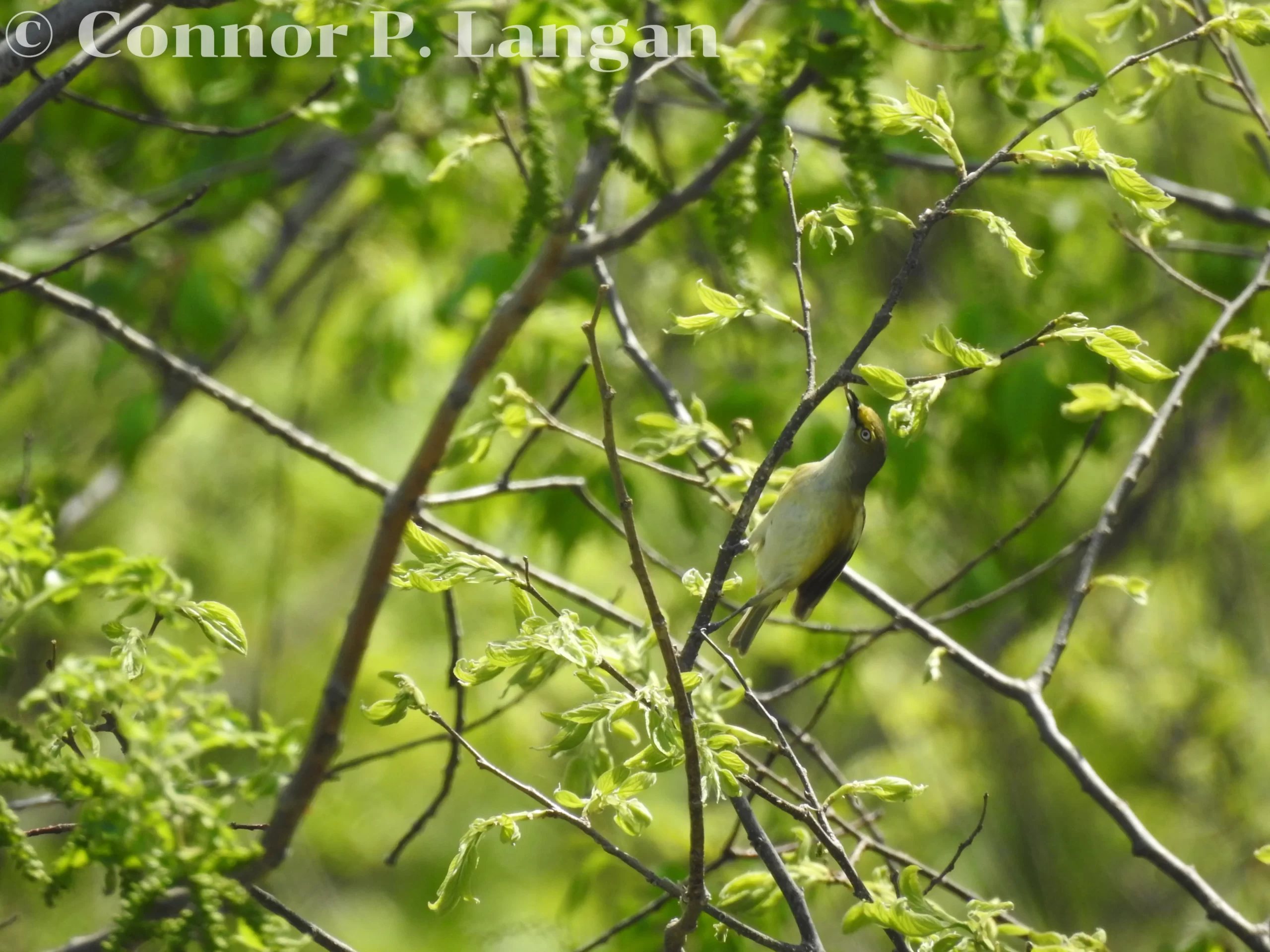Description
- White-eyed Vireos are small songbirds with medium-length tails and stout bills. These birds have a round-headed appearance.
- White-eyed Vireos measure anywhere from 4.25 to 5 inches in length. They weigh 0.3 to 0.5 ounces.
- Male and female White-eyed Vireos are sexually monomorphic. They have prominent yellow spectacles around their pale, white eyes.
- The heads and throats of White-eyed Vireos are light gray. These vireos have green backs, two pale wingbars on each wing, and pale undersides with yellow wash.
- Immature White-eyed Vireos can be distinguished by the dark eyes that they possess until their first spring.
Behavior
- Male White-eyed Vireos are persistent singers that will vocalize for the majority of the daylight hours. The males do the majority of the work when it comes to territorial defense. Males will attempt to repel intruding males and other birds that they deem a threat.
- White-eyed Vireos have a slow-going lifestyle that can make them difficult to detect as they forage in shrubs.
Diet
- White-eyed Vireos are primarily insectivorous, but they incorporate berries into their diets at certain points of the year.
- Spring and summer are times in which these birds eat little aside from insects. Berries make up an increasingly large part of their diets during fall and winter. Here are some good shrubs to plant if you want to attract White-eyed Vireos:
- Dogwood
- Sumac
- Wax Myrtle
Habitat
- White-eyed Vireos thrive in a habitat that features plenty of shrubs and young plant growth. Therefore, look for White-eyed Vireos in early successional habitats such as forest edges, recently-burned tracts of forest, and thickets.
- These birds can be found in such habitats throughout the year.
Range
- White-eyed Vireos are found east of the Great Plains during the breeding season. The northeastern United States is the northern extent of their range.
- White-eyed Vireos are among the most northerly wintering vireos, as they winter as far north as Virginia. These vireos also winter in the American Southeast, Mexico, northern Central America, and parts of the Caribbean.
Breeding
- White-eyed Vireos are monogamous songbirds that remain with a single partner throughout the breeding season. This species often returns to breed in the same area every year, but they do not necessarily keep the same mates.
- Although most vireos construct cup-shaped nests, White-eyed Vireos defy the norm with their hanging nest. Females choose the nest location, but both males and females construct the nest.
- White-eyed Vireo nests are situated low to the ground, being only 6 feet off the ground at most. The nests of these songbirds are affixed to a fork in a tree or shrub.
- Nests are constructed using grasses, lichens, hairs, and spider web silk. It takes between 3 to 5 days for the nest to be built.
- A female White-eyed Vireo can produce one to two broods of eggs per year. Each clutch contains up to 5 eggs, and it takes about two weeks for the eggs to hatch. Young fledge and leave the nest around 10 days later.
Backyard Birding
- White-eyed Vireos may spend part of the year in a backyard, as the shrubs that are often planted in yards are great habitats for this species.
- A White-eyed Vireo will not visit a bird feeder or nest in a birdhouse. However, they may bathe in a birdbath.
Population Status
- This species has enjoyed considerable population gains in the past half-century. Thanks to a 33% increase in their population, there are now more than 21 million White-eyed Vireos.
- Threats to White-eyed Vireos include habitat loss and degradation and brood parasitism.

